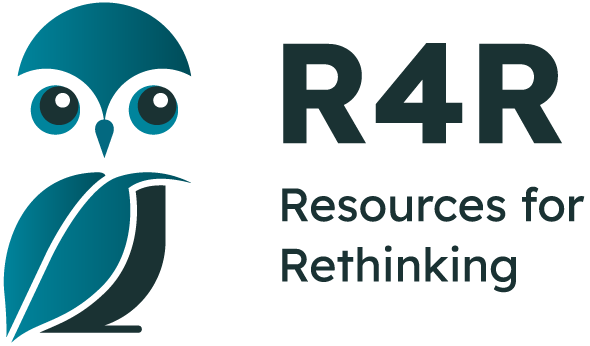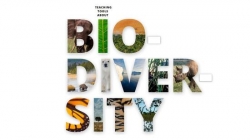Search for Resources
Description
Students will perform a biodiversity audit of their local grounds, following similar steps as scientists would in the field. Based on their findings, they will strategize ways to increase and protect the area’s biodiversity by making it more habitable for species.
General Assessment
What skills does this resource explicitly teach?
The focus of the lesson is on building awareness about the importance of biodiversity and the criteria scientists use when assessing it.
Strengths
- a good quantity of quality background information for the teacher
- all materials are provided
- background information is provided for the students
- extension activities as well as additional background information are included to further the learning
Weaknesses
- lack of suggestions for struggling learners
Recommendation of how and where to use it
The activities included in the lesson plan are well suited for science classrooms when talking about biodiversity and ecosystems.
Relevant Curriculum Units
The following tool will allow you to explore the relevant curriculum matches for this resource. To start, select a province listed below.
- Step 1Select a province
- Alberta
- Step 2Select a grade level
- Grade 5
- Step 3Select a subject
- Science
- Step 4Relevant matches
- Earth Systems: Understandings of the living world, Earth, and space are deepened by investigating natural systems and their interactions.
- Grade 6
- Step 3Select a subject
- Science
- Step 4Relevant matches
- Earth Systems: Understandings of the living world, Earth, and space are deepened through investigating natural systems and their interactions.
- Grade 7
- Step 3Select a subject
- Science
- Step 4Relevant matches
- Interactions and Ecosystems
- Grade 9
- Step 3Select a subject
- Science
- Step 4Relevant matches
- Biological Diversity
- Manitoba
- New Brunswick
- Newfoundland & Labrador
- Northwest Territories
- Nova Scotia
- Nunavut
- Step 2Select a grade level
- Grade 6
- Step 3Select a subject
- Science
- Step 4Relevant matches
- Life Systems: Diversity of Living Things
- Grade 7
- Step 3Select a subject
- Science
- Step 4Relevant matches
- Interactions and Ecosystems
- Grade 8
- Step 3Select a subject
- Science
- Step 4Relevant matches
- Interactions in Our Environment
- Grade 9
- Step 3Select a subject
- Science
- Step 4Relevant matches
- Biological Diversity
- Ontario
- Step 2Select a grade level
- Grade 6
- Step 3Select a subject
- Science & Technology
- Step 4Relevant matches
- Life Systems: Biodiversity
- Grade 7
- Step 3Select a subject
- Science & Technology
- Step 4Relevant matches
- Life Systems: Interactions in the Environment
- Grade 9
- Step 3Select a subject
- Science
- Step 4Relevant matches
- :Biology: Sustainable Ecosystems
- Prince Edward Island
- Quebec
- Step 2Select a grade level
- Grade 5
- Step 3Select a subject
- Science & Technology
- Step 4Relevant matches
- Living Things
- Grade 6
- Step 3Select a subject
- Science & Technology
- Step 4Relevant matches
- Living Things
- Grade 7
- Step 3Select a subject
- Science & Technology
- Step 4Relevant matches
- The Living World
- Grade 8
- Step 3Select a subject
- Science & Technology
- Step 4Relevant matches
- The Living World
- Grade 9
- Step 3Select a subject
- Science & Technology
- Step 4Relevant matches
- Applied Science & Technology: The Living World
- Science and Technology: The Living World
- Saskatchewan
Themes Addressed
Ecosystems (1)
- Biodiversity
Sustainability Education Principles
| Principle | Rating | Explanation |
|---|---|---|
| Consideration of Alternative Perspectives | Good | The educator's resource guide provides the information needed to teach students about biodiversity and the impacts of human activity. The guide provides basic biodiversity facts, why biodiversity and nature matter, what threats our planet's biodiversity is facing, what WWF is doing to help, and what kids can do to help. |
Consideration of Alternative Perspectives:
| ||
| Multiple Dimensions of Problems & Solutions | Good | The resource supports the examination of these dimensions in the educator's guide and the infographices provided in the Living Planet report. |
| Multiple Dimensions of Problems & Solutions: Effectively addresses the environmental, economic and social dimensions of the issue(s) being explored.
| ||
| Respects Complexity | Good | Through the activities within this resource, students will gain an understanding of the importance of nature and how all living things are connected. |
| Respects Complexity: The complexity of the problems/issues being discussed is respected. | ||
| Acting on Learning | Good | Students will design a map of their school or community grounds that defines the natural areas being assessed. They develop and implement ideas for how to increase biodiversity in their area. |
| Acting on Learning: Learning moves from understanding issues to working towards positive change — in personal lifestyle, in school, in the community, or for the planet
| ||
| Values Education | Good | In the final class discussion students have the opportunity to clarify their views and opinions on ways to help with biodiversity and monitoring our planet’s health. |
| Values Education: Students are explicitly provided with opportunities to identify, clarify and express their own beliefs/values. | ||
| Empathy & Respect for Humans | Poor/Not considered | No considered in this resource |
| Empathy & Respect for Humans: Empathy and respect are fostered for diverse groups of humans (including different genders, ethnic groups, sexual preferences, etc.). | ||
| Personal Affinity with Earth | Very Good | In this activity, students will follow similar guidelines to those of scientists when determining an area's biodiversity health. They survey the biodiversity of their school or community grounds. Based on the results, they will strategize ways to increase and protect the area's biodiversity by making it more habitable for species. |
| Personal Affinity with Earth: Encourages a personal affinity with -the natural world.
| ||
| Locally-Focused Learning | Very Good | Students perform a biodiversity audit of their local grounds, following similar steps as scientists in the field. Based on their findings, they will evaluate the property based on how well it can support species and devise a plan for how they can increase its biodiversity score. |
| Locally-Focused Learning: Includes learning experiences that take advantage of issues/elements within the local community.
| ||
| Past, Present & Future | Satisfactory | Background information is provided; making reference to the past and present activities makes the experiences relevant to the learners and the What Kids Can Do section provide opportunities to reinforce concepts for the future. |
| Past, Present & Future: Promotes an understanding of the past, a sense of the present, and a positive vision for the future. | ||
Pedagogical Approaches
| Principle | Rating | Explanation |
|---|---|---|
| Open-Ended Instruction | Good | Students conduct their own biodiversity audit and develop and implement ideas to increase biodiversity in their area. |
| Open-Ended Instruction
: Lessons are structured so that multiple/complex answers are possible; students are not steered toward one 'right' answer. | ||
| Integrated Learning | Satisfactory |
|
| Integrated Learning: Learning brings together content and skills from more than one subject area
| ||
| Inquiry Learning | Good | Research and experimenting (hands on activities) provide good inquiry-based learning. Where the students become biodiversity detectives they discover and build knowledge for themselves. |
| Inquiry Learning: Learning is directed by questions, problems, or challenges that students work to address.
| ||
| Differentiated Instruction | Good | The resource addresses the needs of visual, auditory and kinesthetic learners. |
| Differentiated Instruction: Activities address a range of student learning styles, abilities and readiness.
| ||
| Experiential Learning | Good | Students perform a biodiversity audit of their local grounds, following similar steps as scientists in the field. Based on their findings, they will evaluate the property based on how well it can support species and devise a plan for how they can increase its biodiversity score. |
| Experiential Learning: Authentic learning experiences are provided
| ||
| Cooperative Learning | Satisfactory | Students work in groups |
| Cooperative Learning: Group and cooperative learning strategies are a priority.
| ||
| Assessment & Evaluation | Satisfactory | The assessment tool mentioned in this lesson is more of a guided discussion. |
| Assessment & Evaluation: Tools are provided that help students and teachers to capture formative and summative information about students' learning and performance. These tools may include reflection questions, checklists, rubrics, etc. | ||
| Peer Teaching | Satisfactory | There is a suggestion for students to be part of this global effort by taking action to avoid wasting food and water, save energy, and speak out about the importance of biodiversity to friends and family |
| Peer Teaching: Provides opportunities for students to actively present their knowledge and skills to peers and/or act as teachers and mentors.
| ||
| Case Studies | Poor/Not considered | |
| Case Studies: Relevant case studies are included. Case studies are thorough descriptions of real events from real situations that students use to explore concepts in an authentic context. | ||
| Locus of Control | Good | The resource provides extended options to enhance the learning. Students develop and implement ideas on how to increase biodiversity in their area. |
| Locus of Control: Meaningful opportunities are provided for students to choose elements of program content, the medium in which they wish to work, and/or to go deeper into a chosen issue. | ||

